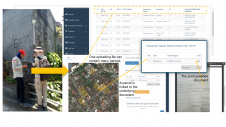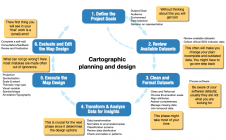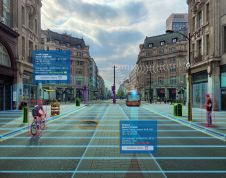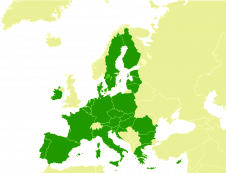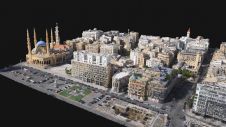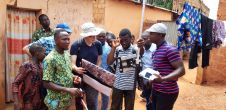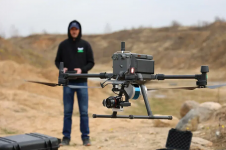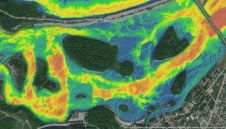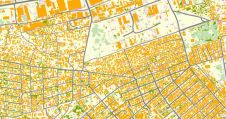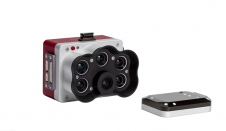Participatory Geomatics Network for Coastal Mapping and Monitoring
以社区为基础的地理空间更好的波形的方法rstand the Coastal Environments in the Estuary and Gulf of St Lawrence, Québec, Canada
Capacity-building and empowerment using low-cost geomatics equipment, easy-to-use field protocols and semi-automated processing algorithms provide a resilience pathway for coastal communities facing the effects of climate change. This article presents a participative geomatics project with the goal of increasing southern Québec’s coastal communities’ ability to map and monitor changes in their coastal environment. This co-constructed project aims to develop a participatory network of individuals and groups capable of acquiring, processing and interpreting coastal geospatial data of the Estuary and Gulf of St Lawrence (eastern Canada).
沿海地区具有高度的动态性,并暴露于多个过程中,这些过程是由全球气候变化和人为活性引起的。越来越多的沿海社区面临着挑战性的条件,需要适应土地管理政策,以确保对沿海地区的可持续使用和保护。为了就如何和何地采取行动做出明智的决定,当地演员需要对其领土有很好的了解,以“对他们说话”。因此,获得精确和最新数据的获取对于提高对快速变化的海岸线的弹性至关重要。

在应用地理器领域的最新进展中,尤其是在低成本精确定位设备和开源摄影测量算法中提供的灵活性,为非专家和非专家带来了地理空间数据采集的巨大潜力。当与参与和音乐会方法结合使用时,地理空间数据是当地团体和个人领土拨款的关键因素。数据生产是响应沿海地区气候变化的关键组成部分,并为社区提供了适应途径,以更好地与决策者交流当地挑战。地图制作过程使映射器可以通过产生地理参考知识并反思环境及其进化来使其环境空间化。应用地理学技术转移到当地社区既是挑战,也是创新机会。当地参与者需要能够生产其领土的高质量地理空间产品,这也将有助于增加沿海地区的高分辨率研究的数量。
Innovative Research Programme
圣劳伦斯河口和海湾的南部曲ébec (eastern Canada) has a 4,500km-long shoreline and is no exception to the rapid changes currently being faced worldwide in coastal regions. In the province of Québec, community groups called Comités ZIP (Zone d’intervention prioritaire- 优先干预区)采取行动,以增强和保存沿海地区和海洋区域。根据他们对沿海地区的经验和知识,ComitésZip认识到需要在沿海生态系统监测研究中开发用于地理空间数据获取和处理的工具和协议。
Funded by the Québec Maritime Network (RQM), this project has emerged from a request of four Comités ZIP to develop a participatory geomatics network across the Estuary and Gulf of St Lawrence. The ‘Mettre le Québec maritime sur la carte’ (Putting maritime Québec on the map) project brings together interdisciplinary experts in a co-constructed approach to bridge knowledge at different scales. From fundamental research (universities), to applied R&D (colleges) and local/practical knowledge (Comités ZIP), all participants work in a cross-sectorial approach that links geomatics, geomorphology, ecology, social sciences, engineering and innovative social practices.
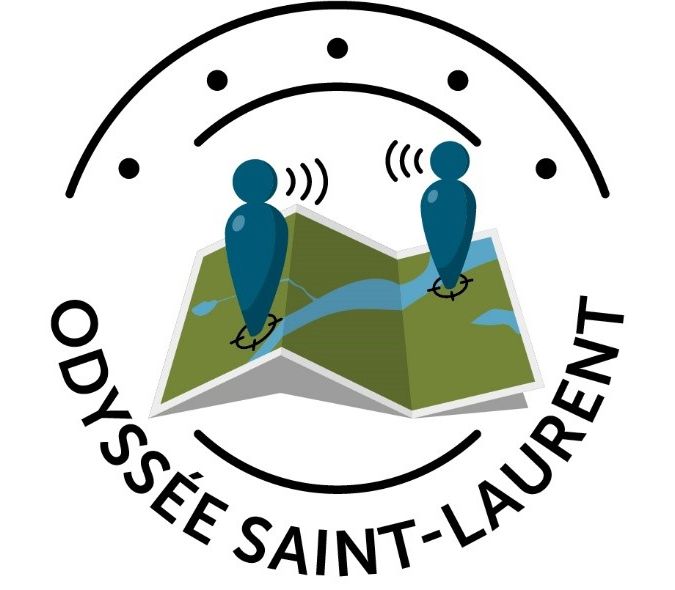
The project orientations are based on six fundamental flagship concepts, evenly distributed between technology (geomatics) and social sciences (participation). Together, these concepts form fundamental milestones* to ensure the proper use, acceptance and appropriation of technology by community groups.
* The project is currently ongoing. Therefore, some of the milestones presented here have been implemented, while others are still under construction. The milestones are presented here to showcase the project as a whole. Due to COVID-19 restrictions, most of the planned in-person participatory work has been cancelled or postponed.
Easy-to-use Tools and Protocols
Advances in the field of photogrammetry have opened new avenues for mapping coastal regions using low-cost acquisition systems and easy-to-use processing schemes. The acquisition of georeferenced aerial images using a combined camera and GNSS receiver mounted on a range of vehicles such as UAVs, kites, poles or aircraft provides a lot of information about ground coverage, the location of coastal infrastructures and – for repeated surveys – coastal dynamics and evolution. The camera resolutions installed on commercially available UAVs allow the capture of high-resolution low-altitude images. The field campaigns undertaken using theDJI MavicMini and Mini 2, both equipped with a 12MP RGB camera, show great potential for low-cost and rapid image acquisition over a few linear kilometres of shoreline. Moreover, the weight of this UAV model (<250g) facilitates its use with regards to the current Transport Canada regulations.
曾经使用低成本EMLID RS2多波段GNSS接收器在RTK模式下使用的接地控制点(GCP)(GCP)结合起来,可用于生产沿海环境的高分辨率数字表面模型(DSM)。我们的研究团队开发了建立在开源结构(SFM)解决方案和算法的组合的摄影处理软件。更具体地说,从各种开源软件和库中捕获了特征提取,稀疏匹配和初始方向估计的解决方案,而Aero-Triangulation或Block Bundle调整,密集匹配和点云的生成的技术是在开发的加速过程的房屋。这个想法是为该解决方案制作最小且易于使用的用户界面,以降低非专家的技术障碍,并生成准确,精确的制图产品,例如正瘤,DSM和Point Clouds。
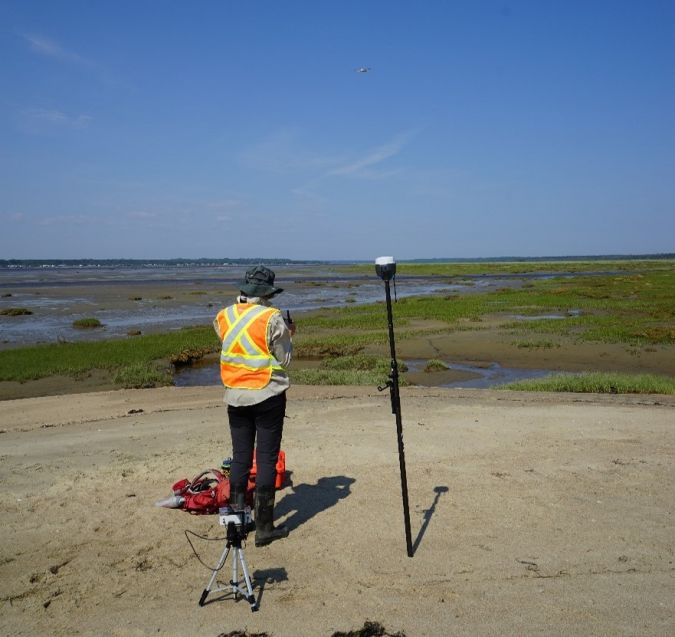
Monitor Precision to Track Changes
In order to properly use and interpret cartographic products, the users need to have a clear understanding of potential error sources and the expected precision of the methods. On a natural environment test bed, we assessed the precision and accuracy of aerial photographic surveys with SfM techniques for coastal change monitoring. Computed systematic errors and uncertainties in the methods for multiple land covers (vegetated/bare, coastal infrastructures, mud/sand/rock, etc.) and environmental conditions were used to determine a change detection threshold. This value represents the minimum amount of change required to reliably resolve coastal changes or the relative uncertainty for volume estimation. In a technology transfer approach, the computation of the uncertainties associated with different surveying scenarios raises awareness of error sources, and helps make the distinction between ‘relative’ and ‘absolute’ errors and between ‘precision’ and ‘accuracy’ for valid data interpretation. By adding this awareness, crowd-sourced data is associated with a known level of confidence and can be trusted by decision makers or potential users of the datasets.
Adaptability to Coastal Geodiversity
The Estuary and Gulf of St Lawrence coastal region is composed of a wide variety of coastal systems and environments (e.g. salt marshes, cliffs, beaches). The development of multiple data acquisition scenarios to cover the range of southern maritime Québec’s geodiversity using UAVs and differential GNSS will significantly improve the data coverage capabilities. Photogrammetry is a technique that can be easily used in various conditions, from flat to vertical surfaces, and drones can access remote or hazardous environments. UAVs also have the power to obtain low-altitude oblique images, offering a ‘new’ perspective in which individuals can see personally relevant locations, notable landmarks or ongoing activities that can help to capture the scale at which ecogeomorphological and socio-economic processes act.
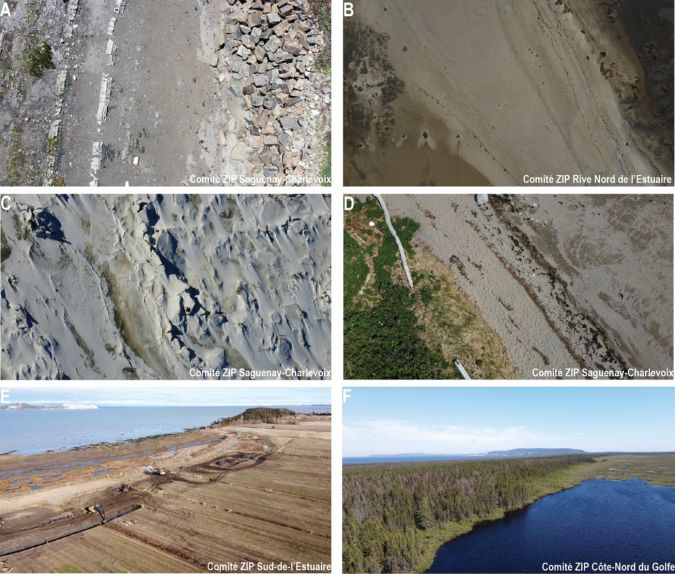
Consultation and Concertation
由于参与部子任务P, coastal mapping and monitoring priorities have to be defined in cooperation with local actors. Public hearings, concertation and consultation meetings are used to gather local knowledge of socio-economic, ecological, geomorphological and economic challenges in the coastal zone. Socially innovative approaches to coastal zone management are used to prioritize the needs for coastal restoration or habitat remediation. Co-construction workshops, divergence/convergence activities, participatory mapping exercises and dynamic online meeting platforms are some of the tools and methods used to yield tangible cooperative action plans in which cartography and photogrammetry are preferred means to portray the coastal spaces.
技术转移作为授权的工具
Technology transfer, composed of field training, protocols, help support and multiple retroactions to improve tools and protocols, is applied to ensure technological empowerment of the Comités ZIP and the local communities. The added values of technical know-how and expertise give these Comités ZIP a credibility towards local partners and national decision makers. Transferred expertise and training builds capacity outside of large cities and creates a new data acquisition model where local groups can acquire, process and interpret high-quality geospatial information to collaborate, exchange and share knowledge. As a result, monitoring coastal change can now be undertaken by and for local actors.
Open Data Sharing and Diffusion
Free and open access to geospatial data democratizes the use of community-based research projects. The semi-automated photogrammetric processing workflows developed in this project significantly reduce the complexity of data processing and accelerate result sharing and usage by the largest number of local groups, individuals and national agencies. We are currently evaluating the possibility of offering our workflow as a cloud-based, accessible yet affordable solution only to our non-profit users in the maritime sector. Finally, international collaborations with the GeoNadir platform to share datasets allow the Comités ZIP to reach out to an international participatory geomatics approach to map the most at-risk ecosystems. It is an excellent way to promote actions among an international network of drone mappers and to share experiences and images.
Conclusions
Technology is evolving rapidly, and community organizations and non-experts have the legitimacy to understand and own tools capable of giving them autonomy and increasing their involvement in the decision-making processes of the coastal region in which they live. The new participatory geomatics network based on collaboration and concertation increases the diversity of the actors responsible for coastal zone mapping in the St Lawrence region. This project offers vast potential for community-based empowerment using applied geomatics and social innovation while fostering collaboration between coastal zone users and decision makers.
Acknowledgements
This project has been funded by the Ministère de l’Économie et de l’Innovation via the Quebec Maritime Network as part of the Odyssée Saint-Laurent 2020-2022 programme. A special thank you to the following individuals and organizations for their support and involvement in the project and/or this article: Comité ZIP Sud-de-l’Estuaire, Comité ZIP Rive Nord de l’Estuaire, Comité ZIP Saguenay-Charlevoix, Comité ZIP Côte-Nord du Golfe, Sylvain Dufour and Joël Basque (Solutions Novika), Martial Dubois and David Guimont (Living Lab in open innovation), Maxime Boivin (Université du Québec à Chicoutimi), Steve Plante and Antoine Morissette (Université du Québec à Rimouski), Mozhdeh Shahbazi, Yannick Duguay, James Duchesne, Tony Balbine (Center for geomatics of Quebec) and Karen Joyce (James Cook University, GeoNadir).












